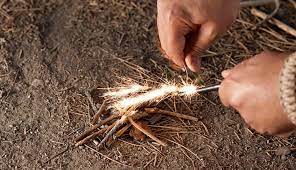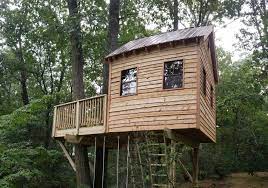Fire has been a vital element for human survival, providing warmth, light, cooking, and protection for millennia. While modern conveniences like matches and lighters have made starting a fire easier, knowing how to start a fire without them is an essential skill for outdoor enthusiasts, survivalists, and anyone interested in primitive skills. In this guide, we will explore various techniques and methods for starting a fire using natural materials and basic tools.
Understanding Fire-Making Principles
Before diving into specific methods, it’s crucial to understand the basic principles of fire-making:
- Fire Triangle: Fire requires three key elements: heat, fuel, and oxygen. These three components form the fire triangle. To start a fire, you need to manipulate these elements effectively.
- Ignition Temperature: Different materials ignite at different temperatures. You need to generate enough heat to reach the ignition temperature of your chosen fire-starting material.
- Tinder, Kindling, and Fuel: Successful fire-making involves three stages of material: tinder (easily combustible material that catches fire with minimal heat), kindling (small sticks or materials that catch fire from tinder), and fuel (larger logs or materials that sustain the fire once it’s established).
Selecting Fire-Starting Materials
Before attempting to start a fire, gather the necessary materials:
- Tinder: Look for dry, fluffy materials that catch fire easily. Good tinder options include dry leaves, birch bark, cotton balls, dried grass, and wood shavings.
- Kindling: Collect small sticks of varying sizes. These sticks will catch fire from the tinder and gradually build up the flames. Opt for materials like twigs, small branches, and thin strips of wood.
- Fuel: Larger pieces of wood are required to sustain the fire once it’s ignited. Gather various sizes of firewood, from small logs to larger pieces.
Fire-Making Techniques
1. Fire Starter and Flint or Steel
Materials: Fire starter (char cloth, cotton soaked in wax, or other flammable material), flint or steel, tinder, kindling, fuel.
Steps:
- Place a small piece of tinder on a stable surface.
- Hold the flint or steel in one hand and the fire starter in the other.
- Strike the flint against the steel, directing the sparks onto the fire starter. The sparks should catch the fire starter material, creating a small ember.
- Carefully transfer the ember onto the tinder.
- Gently blow on the tinder to ignite it.
- Once the tinder is burning, add kindling gradually, followed by larger fuel as the fire grows.
2. Bow Drill Method
Materials: Bow (bendable stick), spindle (straight stick), fireboard (flat piece of wood), socket (stone or another hard material), tinder, kindling, fuel.
Steps:
- Carve a notch near the edge of the fireboard and create a small depression adjacent to it.
- Place tinder beneath the notch.
- Insert the spindle into the depression and hold it in place with the socket.
- Use the bow to rotate the spindle rapidly, generating friction and heat.
- The friction will create an ember in the notch. When the ember is glowing, carefully transfer it onto the tinder.
- Gently blow on the tinder to ignite it.
- Gradually add kindling and fuel to build up the fire.
3. Fire Plough
Materials: Fireboard (flat piece of wood), plough (another piece of wood with a pointed end), tinder, kindling, fuel.
Steps:
- Carve a groove into the fireboard.
- Place tinder at the end of the groove.
- Hold the plough at a slight angle and vigorously slide it back and forth in the groove.
- The friction will create heat, eventually igniting the tinder.
- Once the tinder is lit, add kindling and fuel to grow the fire.
4. Solar Fire-Making
Materials: Clear plastic or glass, tinder, kindling, fuel.
Steps:
- Shape the tinder into a small, dark pile.
- Position the clear plastic or glass in a way that focuses sunlight onto the tinder pile.
- Be patient as the focused sunlight heats up the tinder, eventually igniting it.
- Once the tinder is burning, add kindling and fuel to sustain the fire.
Tips for Success
- Dry Materials: Ensure that your tinder, kindling, and fuel are as dry as possible. Moisture can make fire-starting challenging.
- Preparation: Set up all your materials before attempting to start the fire. This includes arranging your tinder, kindling, and fuel in a way that allows for easy transfer and addition.
- Patience: Fire-making requires patience and perseverance. Be prepared for multiple attempts, especially if you are new to these techniques.
- Airflow: Adequate airflow is essential for combustion. Arrange your materials in a way that promotes airflow to the tinder and kindling.
- Blowing: When transferring an ember to tinder or when trying to ignite the fire, use controlled and gentle blowing to supply oxygen without extinguishing the ember.
- Safety: Always prioritize safety. Have a water source nearby and clear the area of any flammable materials. Be cautious of sparks and embers.
Conclusion
Mastering the art of starting a fire without matches or a lighter is not only a valuable survival skill but also a connection to our ancient ancestors who relied on fire for their very existence. By understanding the principles of fire-making and practicing various techniques, you can become proficient in igniting fires using only natural materials and basic tools. Remember that these methods require practice and patience, so take the time to hone your skills and appreciate the beauty and power of fire.














